Do you want to learn how to write an affiliate blog post?
You’ve come to the right place.
Because in this post, I show you exactly how to write an awesome blog post for affiliate products.
Furthermore:
You’ll also learn writing “hacks” to ensure your post is (actually) read.
Let’s dive in…
How To Write An Affiliate Blog Post
(A Beginners Guide + Examples)
When it comes to writing blog posts for affiliate marketing, there’s really only 3 types of posts you need:
- Best of posts: Where you compare affiliate products side by side.
- How to posts: These are informational posts, where you teach your audience how to do or achieve something.
- Product reviews: Where you review a single product, or several products side by side.
Let’s take a closer look at all 3 post types…
1: Best Of Posts
Also known as “money posts,” these posts will be your main money making posts.
A best of post is a list style post where you compare (review/rank) different products in your niche.
Here’s a few examples of best of posts.
These are titles I’ve made up for demo purposes:
- Best Gaming Laptops for Under $1,000
- Best Guitar Strings to Sound Like a Pro
- Best Chess Books to Read to Crush Your Opponent
- Best Surf Boards to “Rip” Like Kelly Slater
- Best Car Cleaning Kits of 2022
- Best Home Gym Equipment of 2022
Of course, the products you compare will be dependent on the niche you’re in.
And here’s a real life example from one of my own posts.
This post lists the best landing page builders for affiliate marketing.
In the post I compare 5 different products in a list style format.
Products such as LeadPages:
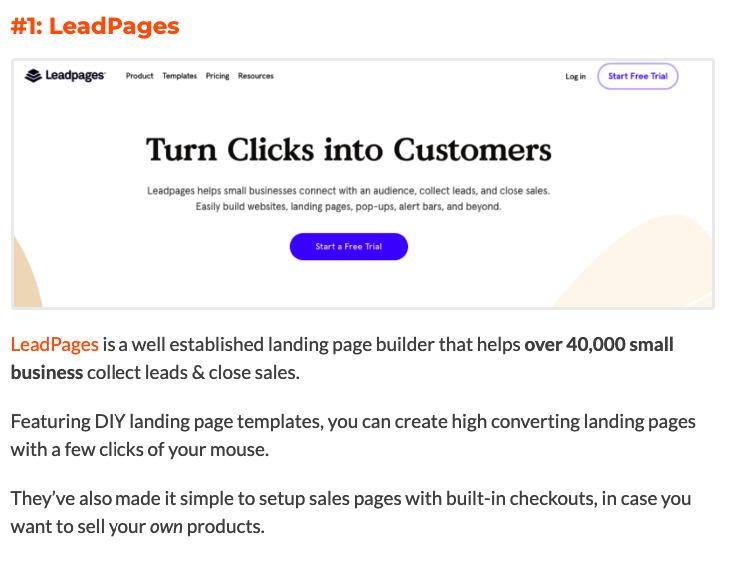
And Elementor:
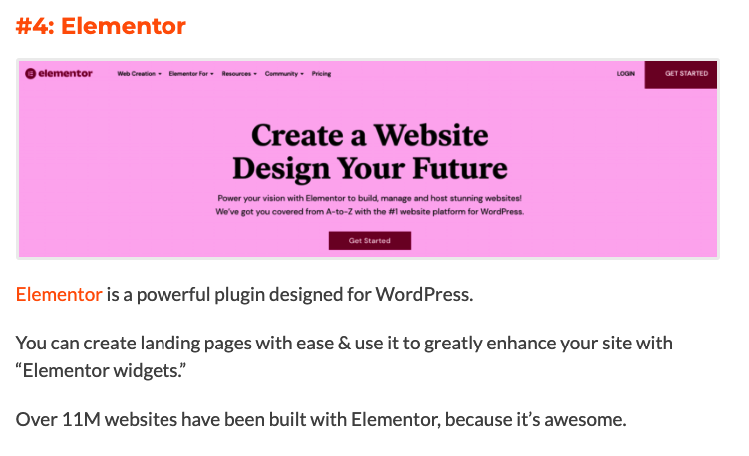
The post also has different bits of information about each product.
Such as an intro, user experience, pricing & what I like/dislike about each product.
With a CTA (call to action) at the end of each listing so people can try the product.
Like so:
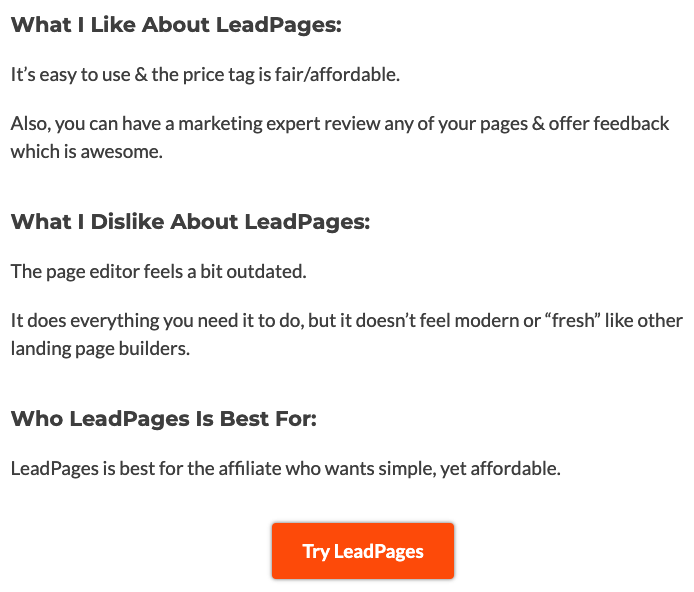
You can put whatever content you like into your own best of posts & structure the post to your own liking.
But one element that’s crucial to include, is a call to action. (CTA)
A CTA is where you tell the reader what you want them to do e.g “try the product” or “click to learn more” etc.
This can be a button, or plain text, it doesn’t matter.
So long as you have at least 1 call to action for each product listing.
Your CTA’s should also be hyperlinked with your affiliate links.
Also:
Make your best of posts as awesome as possible.
The better they are, the better they’ll perform.
2: How To Posts
While best of posts are your money making posts, how to posts are more informational in nature.
These posts are where you’ll teach your readers how to do or achieve something.
Your how to posts can (and should) still be based around an affiliate product.
However:
The main goal isn’t to make money like your best of posts.
The goal with these types of posts is to bring in traffic, build authority & build an email list.
And of course, you should link out to your money posts from these posts when it makes sense.
Here’s an example of a how to style affiliate post:
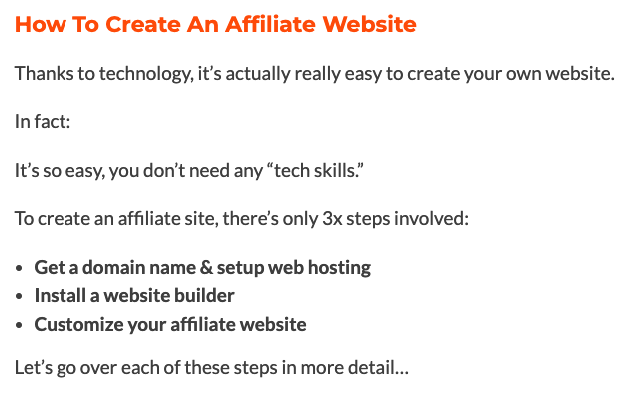
This post teaches people how to create an affiliate website.
When creating your own how to posts, make sure any products being promoted are relevant to the content.
For example:
In my post about creating an affiliate site, the main product being promoted is BlueHost, a web hosting company.
The product is relevant, because you need web hosting to create a website:
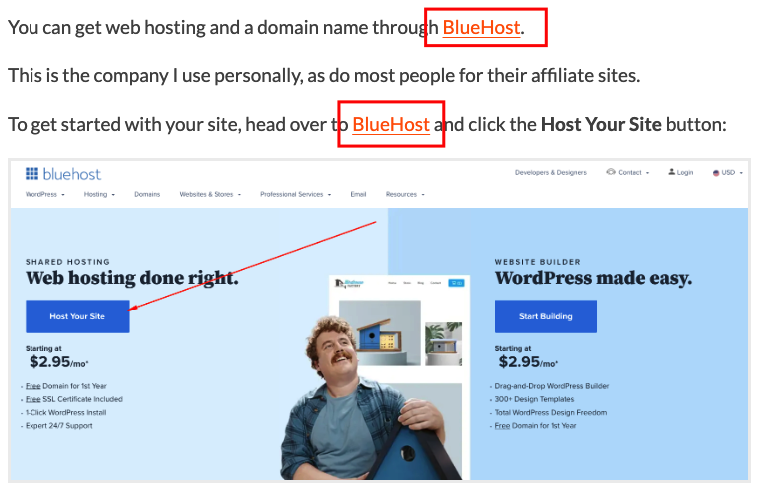 To really beef up your how to posts, consider adding things like stats into the post.
To really beef up your how to posts, consider adding things like stats into the post.
For example:
In my post about affiliate marketing on Pinterest, I include loads of stats wherever possible.
These are not only to beef up the post, but to also give it more weight & credibility:

Also:
If you can, show examples within your how to posts.
Examples will help your readers to visualise whatever it is you’re teaching.
Like you see in this post about affiliate marketing for bloggers:
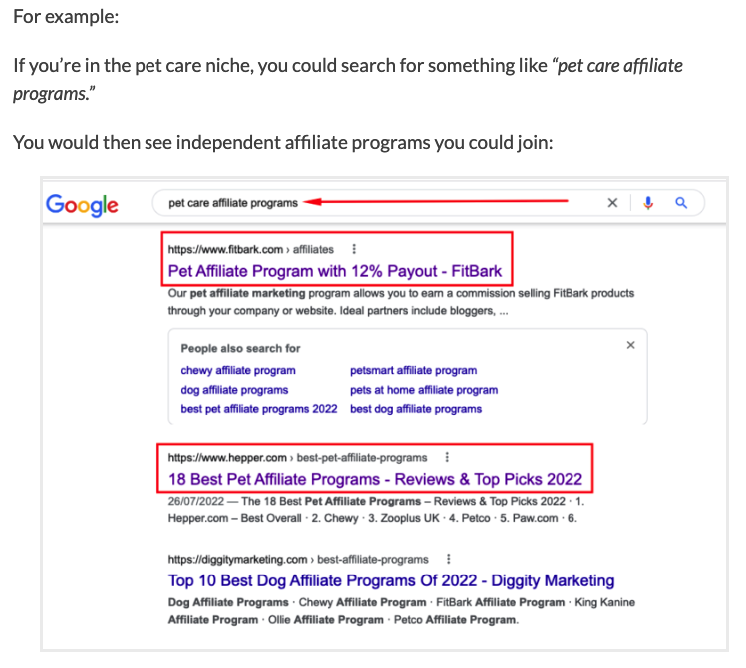
3: Product Reviews
This is another common type of affiliate post.
All you do is write a review about a particular product.
Like you see in this post where I review ClickMagick:
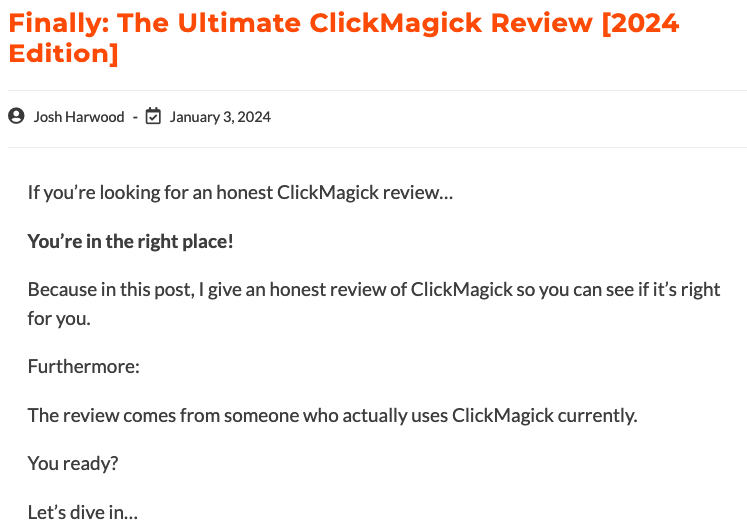
If you write product reviews, go as in-depth as you can.
Share photos of the product, or take screen shots of it, or share photos of you using it etc.
You can add in things like a “top features of” section:
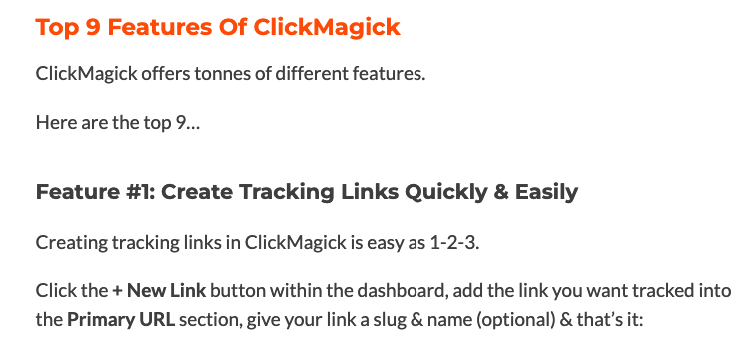
Or a pros & cons section.
Like this:

Provide as much information as possible to your readers within the review.
Being thorough (and genuine) will increase your chances of making sales.
8 Writing “Hacks” To Make Sure
Your Post Is (Actually) Read
No matter how you promote affiliate products, it won’t do any good if people don’t read your post.
Here are 8 writing hacks you can use to draw people into reading your content…
Writing Hack #1: Write A Killer Headline
Most people slap a headline together as quick as possible, then immediately move on to writing their post.
You should spend just as much time (if not more) on your headline as you do your post.
Without a good headline, your post won’t be opened, and your content won’t be read.
The good thing is, there are “formulas” you can use to make coming up with great headlines easy.
For example:
The “how to” formula. Where you start your headline with the words “How to” followed by a benefit to the reader.
This works really well when you simply say what you have to say.
Such as:
“How to Build a 15ft Tool Shed for Under $50.”
Or:
“How to Cut 5lbs of Body Fat in 7 Days or Less.”
The “list post” formula. Where you start your headline with a number, followed by a topic and a benefit.
For example:
“11 Battle Tested Strategies to Boost Your Sales Conversions.”
Or:
“9 Money Saving Tips that Could Make you Rich.”
Writing Hack #2: Write A Short, Punchy Introduction
Ideally, your post will have some kind of an introduction.
Where you introduce to the reader what your post is about, and what they can expect to learn from your post.
The goal of the introduction is to get people excited about your content.
To achieve this, you can ask a “yes” question where the answer to the question will be a yes.
This helps to immediately get the reader engaged.
You should also keep your introduction short and sweet, at no more than 5-6 paragraphs long.
Here’s an example from this very post you’re reading right now:
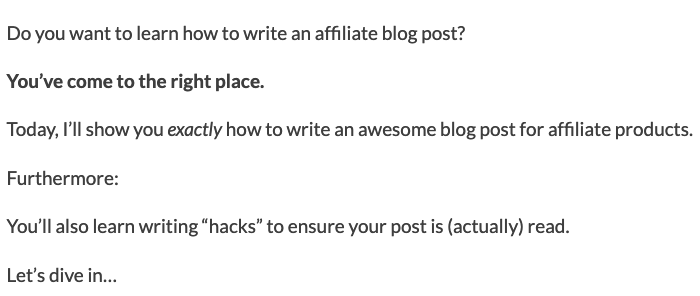
The introduction is used to confirm what the reader will learn when they read the post.
But it’s also short, sweet, and straight to the point.
This helps to keep the reader engaged, and eager to continue reading.
Writing Hack #3: Write Short Paragraphs
Nobody wants to read an essay.
So it’s best to use short paragraphs in your posts.
The shorter the paragraph, the easier and more appealing the content is to read.
Paragraphs between 2-3 sentences long seem to work the best.
Here’s an example of how to not write your paragraphs:

If it looks like an essay, nobody will read it.
Writing Hack #4: Use Parentheses & Bucket Brigades
To make your content even easier and more appealing to read, use parentheses and bucket brigades throughout your posts.
A “parentheses” is a word or phrase that’s inserted between brackets (like this) during a sentence.
And a “bucket brigade” is a word or a couple of words that end with a colon.
Here’s an example of both a parentheses & a bucket brigade from my post about how to become an affiliate marketer:

Writing Hack #5: Use Subheadings
Sub headings help the reader determine the overall outline of your post.
And to navigate to specific sections of a post.
Think of sub headings as a title to the different sections or “sub sections.”
Most of the time, your sub headings will use the H2 or even H3 tags.
You won’t find a single post on this website that doesn’t use sub headings.
Not only do they help a reader determine the overall outline of a post.
But:
Sub headings make it easier to read and grasp the content.
Writing Hack #6: Use A Good Size Font
Write your posts using 16-18pt font.
Why?
Those sizes are big enough that it makes reading the content easy.
But they’re not so big that it makes your writing look, well, desperate.
Never write your post with a smaller font.
Because any smaller, and the content becomes harder to read, so it won’t be read.
Writing Hack #7: Use Big Margins
A margin is the gap between paragraphs, often referred to as “white space.”
You want a lot of white space between each paragraph.
By using big margins, this helps break up the content so it doesn’t look like an essay.
Adjusting the margins of your content can be done within your website’s customization area.
Writing Hack #8: Add Images And/Or Videos
By using images or videos in your content, this creates a multimedia experience.
Which in today’s world, people want.
Use images or videos wherever necessary, and you’ll create a better experience for those reading your content.
Conclusion
Well, there you have it.
How to write an (effective) affiliate blog post.
Even more:
Use the 8 writing techniques I’ve covered, and I guarantee it’ll make a huge difference to your results.
Now, over to you…
“Are you ready to start writing your own affiliate posts?”
Leave a comment below and let me know.
I’d love to hear from you!
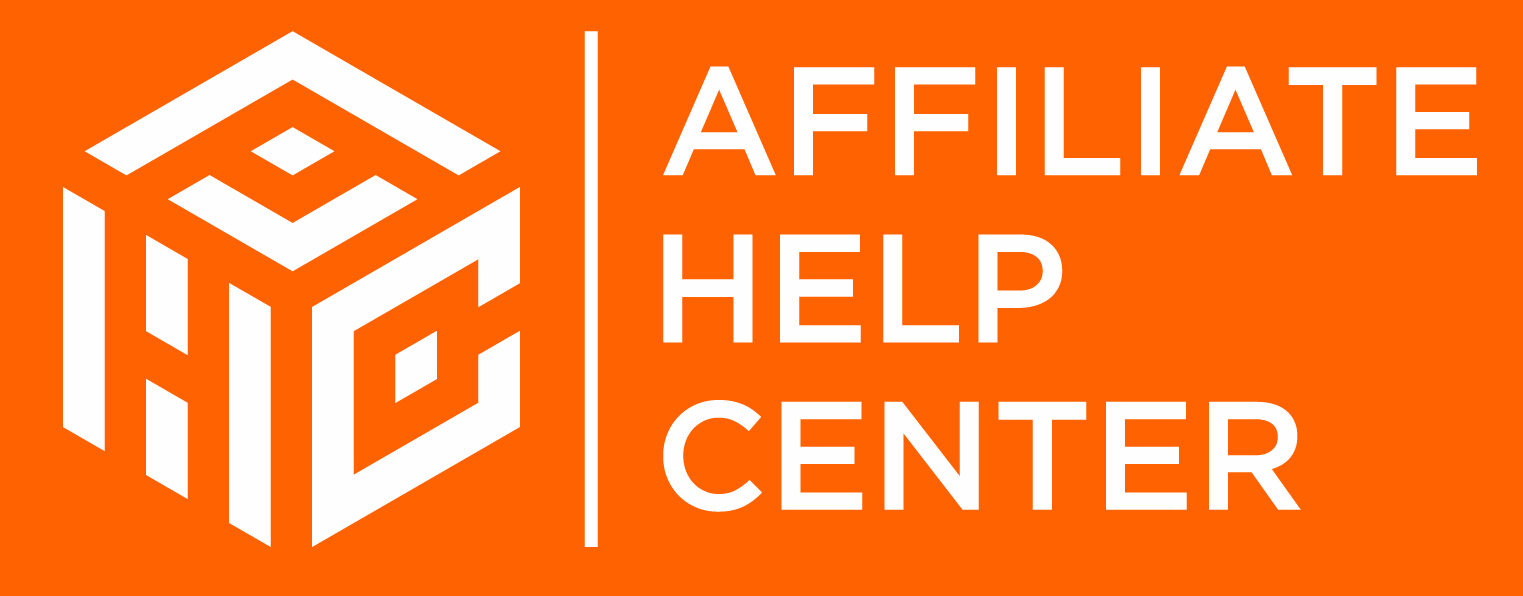



![Affiliate Email Marketing: The Beginners Guide [+ Examples]](https://ahc-1cde4.kxcdn.com/wp-content/uploads/2019/03/Affiliate-email-marketing-1-300x220.png)
Thank you for this amazing article
I want to start affiliate blog but don’t know how to start but after reading this article, I am going to start affiliate blogs on tech.
Also going to download your cheat sheet on affiliate marketing for beginners..
You’re welcome Sunil.
A blog about tech sounds great.
Let me know if you get stuck with anything.
Cheers, Josh.